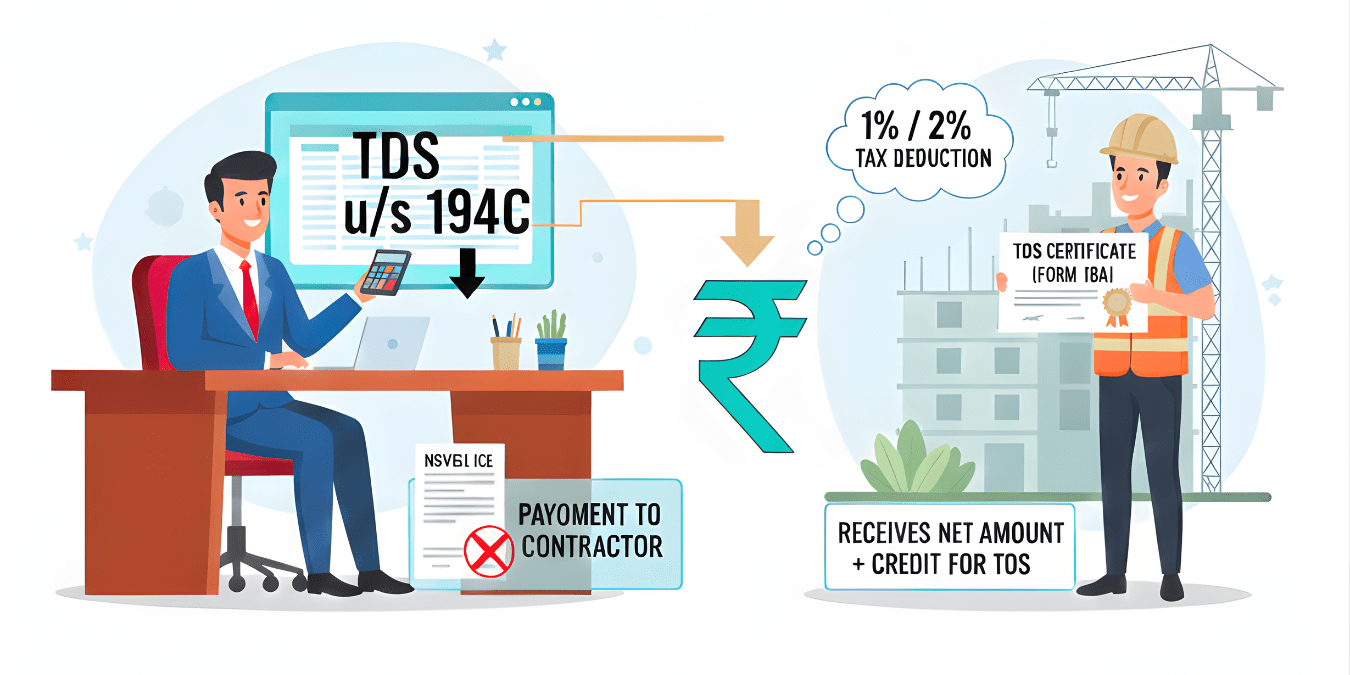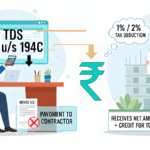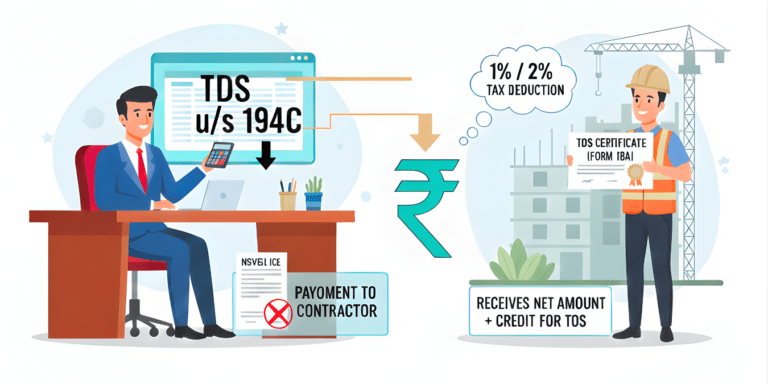
“Can NPS help you retire early? Explore how the National Pension System, with its market-linked returns, tax benefits, and flexibility, can support early retirement. Learn insights from the PFRDA chairman and compare NPS with EPF, PPF, mutual funds, and real estate for a secure financial future.”
Retirement planning is a critical aspect of financial well-being, and with the increasing life expectancy and rising cost of living, it has become more important than ever to start planning early. One of the most talked-about tools for retirement planning in India is the National Pension System (NPS). But can NPS help you retire early? What does the Pension Fund Regulatory and Development Authority (PFRDA) chairman have to say about it? In this comprehensive blog post, we will explore the potential of NPS in helping you achieve early retirement, backed by insights from the PFRDA chairman and other relevant data.
National Pension System
The National Pension System (NPS) is a government-sponsored retirement savings scheme that was launched in 2004 for government employees and later extended to all Indian citizens in 2009. It is a voluntary, long-term retirement savings plan designed to provide financial security during old age. The NPS is regulated by the Pension Fund Regulatory and Development Authority (PFRDA), which ensures transparency, efficiency, and accountability in the system.
NPS offers a unique combination of flexibility, market-linked returns, and tax benefits, making it an attractive option for retirement planning. But can it also help you retire early? Let’s delve deeper into this question.
What is Early Retirement?
Early retirement refers to the decision to leave the workforce before the traditional retirement age, which is typically around 60 years. Early retirement can be a dream for many, but it requires meticulous financial planning, disciplined savings, and smart investment strategies. The goal is to accumulate enough wealth to sustain your lifestyle without a regular income from employment.
Achieving early retirement is not just about saving more; it’s about investing wisely to ensure that your savings grow over time. This is where investment vehicles like NPS come into play.
Can NPS Help You Retire Early?
The short answer is yes, NPS can help you retire early, but with some caveats. NPS is designed to provide a steady income post-retirement, but with the right strategy, it can also be used to accumulate a substantial corpus that allows for early retirement.
Here’s how NPS can contribute to early retirement:
- Long-Term Wealth Accumulation: NPS is a market-linked investment that offers the potential for higher returns compared to traditional fixed-income instruments. Over the long term, these returns can compound significantly, helping you build a substantial retirement corpus.
- Flexibility in Contributions: NPS allows you to contribute as much as you want, subject to certain limits. This flexibility enables you to increase your contributions during your peak earning years, accelerating the growth of your retirement corpus.
- Tax Benefits: NPS offers attractive tax benefits under Sections 80C and 80CCD of the Income Tax Act, which can help you save more and invest more towards your retirement goals.
- Systematic Withdrawal: While NPS is designed to provide a regular pension post-retirement, you can also opt for systematic withdrawal of up to 60% of the corpus at the time of retirement. This lump sum can be used to fund your early retirement.
However, it’s important to note that NPS is not a standalone solution for early retirement. It should be part of a diversified investment portfolio that includes other assets like equity, real estate, and fixed-income instruments.
Key Features of NPS That Support Early Retirement
To understand how NPS can help you retire early, let’s look at some of its key features:
a. Market-Linked Returns
NPS invests in a mix of equity, corporate bonds, and government securities, offering the potential for higher returns compared to traditional fixed-income instruments. The equity component can provide significant growth over the long term, which is crucial for building a large retirement corpus.
b. Choice of Asset Allocation
NPS allows you to choose your asset allocation based on your risk appetite. You can allocate up to 75% of your contributions to equity if you are below 50 years of age. This flexibility enables you to take on more risk during your younger years, potentially earning higher returns.
c. Low-Cost Structure
NPS has one of the lowest fund management charges among all investment options, which means more of your money is invested and compounded over time. This low-cost structure can significantly enhance your returns in the long run.
d. Compounding Benefits
The power of compounding is one of the most significant advantages of NPS. The earlier you start investing in NPS, the more time your money has to grow. This compounding effect can help you accumulate a substantial corpus, making early retirement a realistic goal.
e. Annuity Options
At the time of retirement, you are required to use at least 40% of the corpus to purchase an annuity, which provides a regular pension. The remaining 60% can be withdrawn as a lump sum, which can be used to fund your early retirement.
What Does the PFRDA Chairman Say?
The PFRDA chairman has been a vocal advocate of NPS as a tool for retirement planning. In various interviews and public statements, the chairman has emphasized the importance of starting early and investing regularly in NPS to achieve financial security during retirement.
According to the PFRDA chairman, NPS is not just a retirement planning tool but also a wealth creation tool. He has highlighted the following points:
- Start Early: The earlier you start investing in NPS, the more time your money has to grow. Starting early also allows you to take on more risk, which can lead to higher returns.
- Regular Contributions: Consistent and regular contributions to NPS can help you build a substantial corpus over time. The chairman has advised investors to increase their contributions as their income grows.
- Diversification: The chairman has emphasized the importance of diversification in retirement planning. While NPS is a great tool, it should be part of a diversified investment portfolio that includes other assets like equity, real estate, and fixed-income instruments.
- Tax Benefits: The chairman has also highlighted the tax benefits of NPS, which can help you save more and invest more towards your retirement goals.
In summary, the PFRDA chairman believes that NPS can play a crucial role in helping you achieve early retirement, provided you start early, invest regularly, and diversify your investments.
How to Maximize NPS for Early Retirement
If you’re considering NPS as a tool for early retirement, here are some strategies to maximize its potential:
a. Start Early
The earlier you start investing in NPS, the more time your money has to grow. Starting early also allows you to take on more risk, which can lead to higher returns. For example, if you start investing in NPS at the age of 25, you have 35 years to build your retirement corpus, compared to just 20 years if you start at 40.
b. Increase Contributions Over Time
As your income grows, consider increasing your contributions to NPS. This will help you build a larger corpus over time. You can also take advantage of the additional tax deduction of up to ₹50,000 under Section 80CCD(1B) by increasing your contributions.
c. Choose the Right Asset Allocation
NPS allows you to choose your asset allocation based on your risk appetite. If you are young and have a higher risk tolerance, consider allocating a larger portion of your contributions to equity. As you approach retirement, you can gradually shift to a more conservative allocation.
d. Opt for Active Choice
NPS offers two investment options: Auto Choice and Active Choice. In Auto Choice, your asset allocation is automatically adjusted based on your age. In Active Choice, you have the flexibility to choose your asset allocation. If you are confident about managing your investments, opt for Active Choice to maximize returns.
e. Monitor and Rebalance Your Portfolio
Regularly monitor your NPS portfolio and rebalance it as needed. This will help you stay on track with your retirement goals and ensure that your asset allocation aligns with your risk tolerance.
f. Take Advantage of Tax Benefits
NPS offers attractive tax benefits under Sections 80C and 80CCD of the Income Tax Act. Make sure to take full advantage of these benefits to maximize your savings and investments.
Tax Benefits of NPS
One of the key advantages of NPS is its tax benefits, which can help you save more and invest more towards your retirement goals. Here’s a breakdown of the tax benefits offered by NPS:
- Section 80C: Contributions to NPS are eligible for a tax deduction of up to ₹1.5 lakh under Section 80C of the Income Tax Act.
- Section 80CCD(1B): An additional tax deduction of up to ₹50,000 is available under Section 80CCD(1B) for contributions to NPS. This is over and above the ₹1.5 lakh limit under Section 80C.
- Section 80CCD(2): Employer contributions to NPS are eligible for a tax deduction of up to 10% of the salary (basic + DA) under Section 80CCD(2). This is over and above the ₹1.5 lakh limit under Section 80C.
- Tax-Free Withdrawal: At the time of retirement, you can withdraw up to 60% of the corpus tax-free. The remaining 40% must be used to purchase an annuity, which is taxable as per your income tax slab.
These tax benefits make NPS an attractive option for retirement planning, helping you save more and invest more towards your retirement goals.
Comparison with Other Retirement Plans
Here’s a detailed comparison of the National Pension System (NPS) with other popular retirement plans in India, presented for easy understanding:
| Feature | NPS (National Pension System) | EPF (Employee Provident Fund) | PPF (Public Provident Fund) | Mutual Funds | Real Estate |
| Type of Investment | Market-linked (equity, corporate bonds, government securities) | Fixed-income (government-backed) | Fixed-income (government-backed) | Market-linked (equity, debt, hybrid, etc.) | Physical asset (land, property) |
| Returns | Market-linked returns (8-12% historically) | Fixed interest rate (currently ~8.5%) | Fixed interest rate (currently ~7.1%) | Market-linked (varies based on fund performance) | Depends on property appreciation and rental income |
| Risk Level | Moderate to high (market-linked) | Low (government-backed) | Low (government-backed) | High (market-linked) | Moderate to high (depends on location and market conditions) |
| Liquidity | Low (partial withdrawals allowed under specific conditions) | Low (withdrawal allowed only after retirement or specific conditions) | Low (lock-in period of 15 years) | High (can be redeemed anytime, but subject to exit load in some cases) | Low (illiquid, takes time to sell) |
| Tax Benefits | – Contributions: Deduction up to ₹1.5 lakh under Sec 80C + ₹50,000 under Sec 80CCD(1B) – Withdrawal: 60% tax-free, 40% annuity taxable | – Contributions: Deduction under Sec 80C – Withdrawal: Tax-free if held for 5+ years | – Contributions: Deduction under Sec 80C – Withdrawal: Tax-free | – Equity funds: LTCG tax-free up to ₹1 lakh/year, STCG taxed at 15% – Debt funds: LTCG taxed at 20% with indexation | – Long-term capital gains taxed at 20% with indexation – Rental income taxed as per slab rates |
| Flexibility | High (choice of asset allocation, active or auto choice) | Low (fixed contribution by employer and employee) | Low (fixed annual contribution limit) | High (wide range of funds to choose from) | Low (requires significant upfront investment) |
| Lock-in Period | Until retirement (partial withdrawals allowed under specific conditions) | Until retirement (partial withdrawals allowed under specific conditions) | 15 years (partial withdrawals allowed after 5 years) | No lock-in (except for ELSS funds, which have a 3-year lock-in) | No lock-in, but illiquid |
| Annuity/Pension | Mandatory to use 40% of corpus to buy annuity at retirement | No annuity option (lump sum withdrawal) | No annuity option (lump sum withdrawal) | No annuity option (lump sum withdrawal) | No annuity option (lump sum withdrawal) |
| Cost Structure | Low (fund management charges ~0.01%) | No explicit charges | No explicit charges | Moderate to high (expense ratio varies by fund) | High (transaction costs, maintenance, property taxes) |
| Inflation Protection | Yes (equity exposure helps beat inflation) | Limited (fixed returns may not always beat inflation) | Limited (fixed returns may not always beat inflation) | Yes (equity exposure helps beat inflation) | Yes (property appreciation can beat inflation) |
| Suitability | Ideal for long-term investors seeking market-linked returns and tax benefits | Ideal for salaried employees seeking a safe, government-backed retirement plan | Ideal for risk-averse investors seeking tax-free returns | Ideal for investors seeking higher returns with higher risk tolerance | Ideal for investors with significant capital and long-term investment horizon |
Key Takeaways from the Comparison:
- NPS vs EPF:
- NPS offers higher growth potential due to its market-linked returns, while EPF provides fixed, risk-free returns.
- NPS is more flexible in terms of asset allocation, whereas EPF has a fixed contribution structure.
- NPS vs PPF:
- NPS is market-linked and offers higher returns over the long term, while PPF provides fixed, risk-free returns.
- PPF has a 15-year lock-in, whereas NPS is locked in until retirement.
- NPS vs Mutual Funds:
- NPS is specifically designed for retirement planning with mandatory annuity options, while mutual funds offer more liquidity and flexibility.
- Mutual funds may offer higher returns but come with higher risk and no guaranteed pension.
- NPS vs Real Estate:
- NPS is more liquid and easier to manage compared to real estate, which requires significant capital and maintenance.
- Real estate can provide steady rental income and appreciation, but it is illiquid and subject to market risks.
Which is Best for Early Retirement?
- NPS is a strong contender for early retirement due to its market-linked returns, tax benefits, and flexibility in asset allocation. However, it should be combined with other investments like mutual funds or real estate for diversification.
- EPF and PPF are safer options but may not provide the same growth potential as NPS.
- Mutual Funds are ideal for aggressive investors seeking higher returns but come with higher risk.
- Real Estate is a good long-term investment but lacks liquidity and requires significant capital.
Risks and Considerations
While NPS offers several advantages, it’s important to be aware of the risks and considerations before investing:
a. Market Risk
NPS is a market-linked investment, which means that the returns are not guaranteed and are subject to market risk. The value of your investment can go up or down based on market conditions.
b. Annuity Risk
At the time of retirement, you are required to use at least 40% of the corpus to purchase an annuity. The returns from the annuity are not guaranteed and depend on the prevailing interest rates at the time of purchase.
c. Liquidity
NPS is a long-term investment with limited liquidity. While you can make partial withdrawals under specific circumstances, the primary goal of NPS is to provide financial security during retirement.
d. Inflation Risk
Inflation can erode the purchasing power of your retirement corpus over time. It’s important to consider inflation while planning for retirement and ensure that your investments are growing at a rate that outpaces inflation.
e. Long-Term Commitment
NPS is a long-term commitment, and early withdrawals can result in penalties and tax implications. It’s important to be committed to your retirement goals and avoid withdrawing from NPS unless absolutely necessary.
In conclusion, NPS can indeed help you retire early, provided you start early, invest regularly, and follow a disciplined approach. The PFRDA chairman’s insights highlight the importance of NPS as a tool for both retirement planning and wealth creation. With its market-linked returns, flexibility, and tax benefits, NPS offers a compelling option for those looking to achieve financial independence and retire early.
However, it’s important to remember that NPS is not a standalone solution. It should be part of a diversified investment portfolio that includes other assets like equity, real estate, and fixed-income instruments. By combining NPS with other investment options, you can create a robust retirement plan that helps you achieve your goal of early retirement.
-
The Hidden TDS Trap: Why Your Unlinked PAN Could Cost Contractors 20x More in 2025
Shocking TDS Trap: Unlinked PAN turns ₹5L contractor bill into ₹1L tax bomb under 194C—yet CBDT’s secret 2025
-
TDS 194C Alert: Contractor Payment Could Silently Block 30% of Your Business Expense
Did you know one PAN glitch under TDS 194C can spike your 2% deduction to 20%—silently blocking lakhs
-
Why Compulsory Retirement Could Triple Your Gratuity Overnight – But Strip Your Pension Bare?
Shocking 2025 twist: Compulsory retirement could slash your pension to ⅔—yet explode gratuity 42% via secret 50% wage































